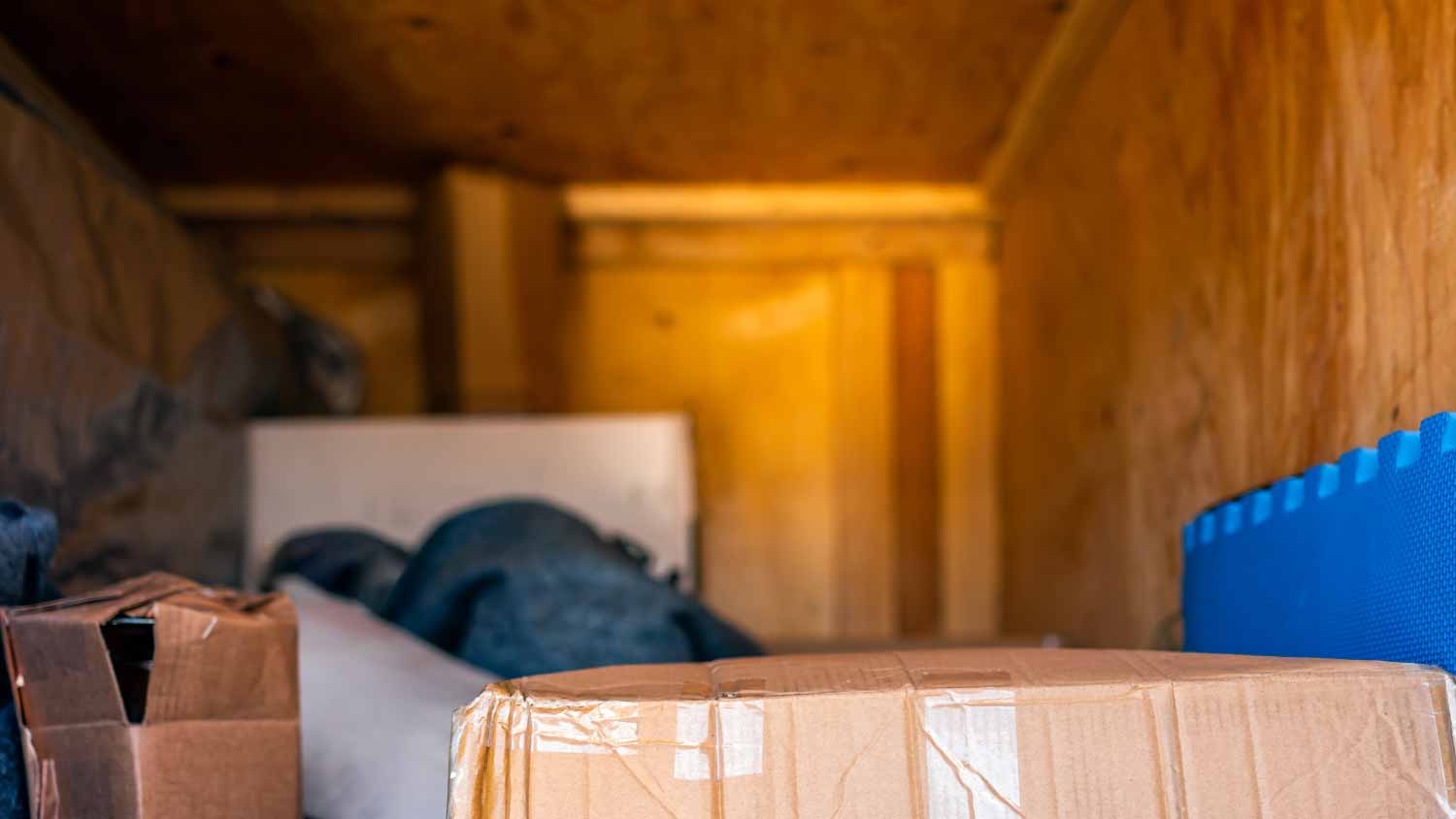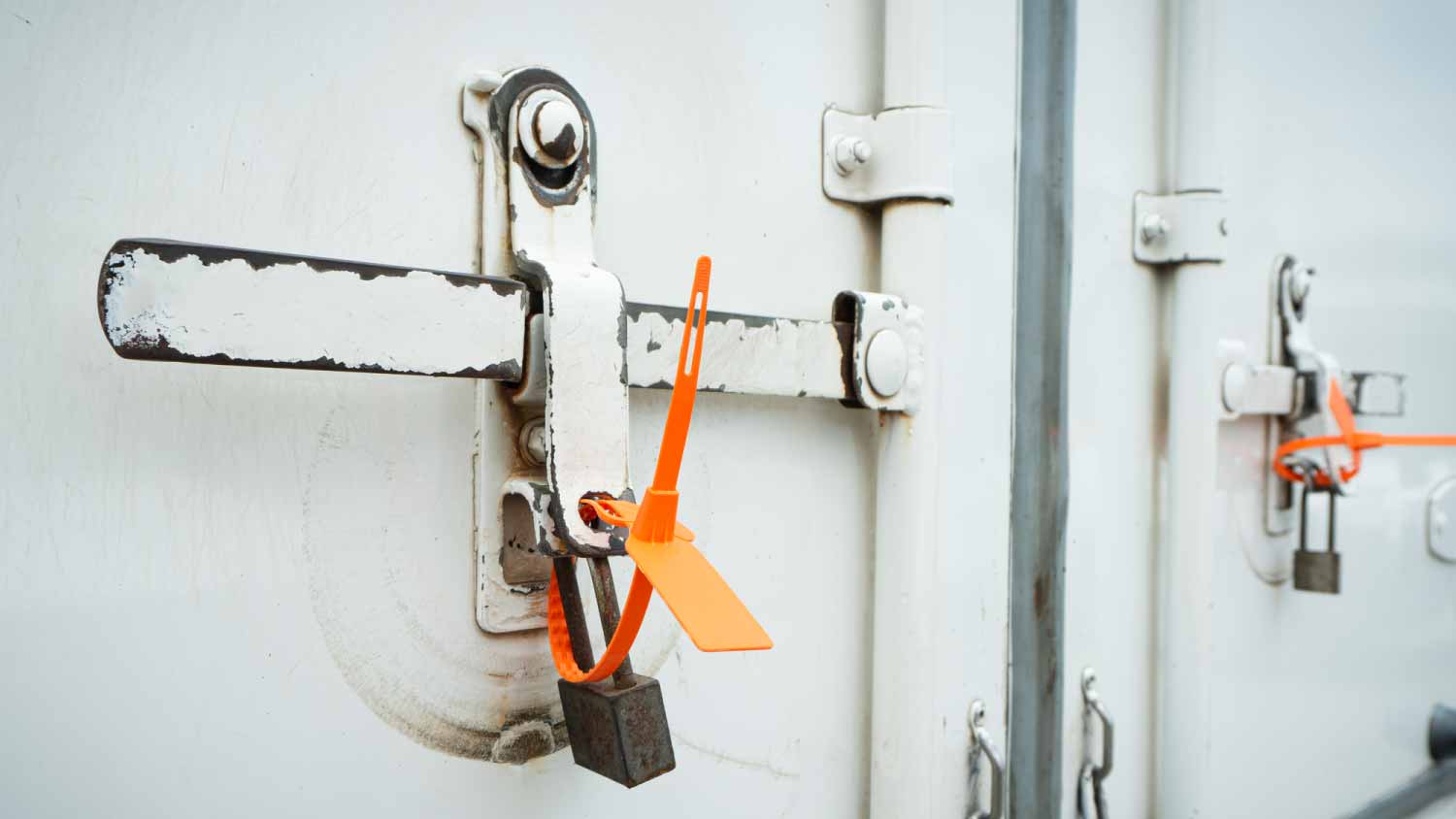How to Pack a Pod for Moving
Pack your pod like a pro


Moving can be stressful, not to mention expensive. One of the easiest ways to save money on your move is to rent a storage container or pod and load it yourself rather than paying the cost of hiring movers. However, planning how to pack a pod for moving can seem like a never-ending game of Tetris. These 11 tips will help you determine the best and most efficient way to pack your pod to maximize the available space.
1. Prepare Your Belongings

Now is the perfect time to go through your stuff and take inventory. What do you want to keep, and what can be sold, given away, or trashed? Once you’ve decluttered, you’ll better know how much stuff you’ll need to pack in your moving pod.
From there, clean the larger items you’re moving, like furniture and appliances, to lighten your workload once you reach your new home.
2. Create a Loading Plan
You can create a loading plan once you know exactly what will be packed in the moving container. First, map out how you will load the pod. Measure everything first to determine where it will best fit in the container. Then, list the order in which you will load items into the pod. Create a clear path from your home to the moving pod to ensure easy access once you start packing.
3. Pack Boxes Carefully
Consider stackable storage boxes rather than cardboard moving boxes to pack your items. These boxes are easier to load into a moving pod since they can be stacked in rows, leaving fewer gaps than a mishmash of differently shaped cardboard boxes. Wrap fragile items, like dishes and glassware, in bubble wrap or packing paper to provide a protective cushion during the move. Place heavier boxes at the bottom of the stack and lighter ones on the top.
4. Disassemble Your Furniture
Disassembling furniture for a move makes it much easier to pack into a moving container. Check which furniture items can be dismantled and which must be moved in one piece. Any furniture item too big to fit through a door should be at least partially disassembled. For example, you might take the legs off your dining table or your bed frame apart to make moving easier.
5. Load Large and Heavy Items First
Heavy pieces should be loaded into the back of the moving pod first. This will create a solid base upon which you can stack lighter boxes to make the most of the available space inside the moving container.
6. Fill In Gaps With Smaller Items

You may have some gaps once you’ve loaded your furniture and boxes into the moving container. Fill these gaps with small boxes, bags, or soft items like pillows and blankets. This lets you maximize the space while preventing larger items and boxes from shifting around during transit.
7. Distribute Weight Evenly
Distributing weight as evenly as possible in your moving pod is essential to minimize damage to your belongings during the move. If you put all the heavy furniture on one side and stack lighter boxes on the other, the moving truck’s axles can become unstable, and your belongings can shift around. Hiring a local moving company can ensure that the weight is evenly distributed.
8. Secure Items to Prevent Damage During Transit

As you load your moving pod, use ratchet straps or ropes to secure furniture and boxes to the anchor hooks along the moving container’s walls. Securing as you go means your belongings are snug in the pod as soon as they are loaded.
9. Keep Valuables With You
Smaller valuable items, like important legal documents or sentimental jewelry, are easy to stash in a small bag you can keep on you during the move. Larger items, like heirloom furniture, are more challenging to keep with you. If you must pack such items in the moving container, wrap them carefully, mark them as “fragile,” and check that you have enough moving insurance to cover the items if they are damaged during the move.
10. Be Aware of Restrictions
Most storage container companies have a list of items that are prohibited in their pods. The following are the most commonly banned items:
Firearms
Hazardous materials (gasoline, chemicals, hazardous waste)
Live plants or animals
Perishable items
Lawn mowers
Motorized vehicles
Check with your moving pod company to ensure you’re not accidentally packing a prohibited item in the container.
11. Lock It Down

Once packed, secure the moving container with a lock. Your container company may carry some options you can purchase when you reserve the pod, or you can buy a padlock or a disc lock from a home improvement store. Keep the keys on you, and never give them to anyone you don’t trust—including your movers.
Frequently Asked Questions
Yes, you need insurance for a moving pod. Moving insurance is worth the cost because it can help pay to replace any damaged or destroyed items during the move. Without insurance, you’d be on the hook to pay for those replacements entirely out of pocket.
Several companies rent out storage pods for moving, including PODS, UHaul, UPack, and 1-800-PACK-RAT. Compare moving pods vs. trucks to decide the best option for your move, then shop around to find the best deal for the size container you need.
The cost of a storage pod will depend on the container's size, the rental duration, and the moving distance. The cost to ship a moving container domestically is around $3,000—that’s on top of the rental price of the storage container. Call around for quotes to find the best price.





- How to Move By Yourself: 10 Top Tips
- 20 Moving Tips to Help You Prepare for Moving Day
- 45-Point Moving Cross-Country Checklist
- 10 Moving Organization Tips To Make Your Move Easier
- The Complete Moving Supplies List You Didn’t Know You Needed
- How to Pack Your Garage in 5 Easy Steps
- How To Prepare for Movers: 17 Essential Tips
- The Ultimate Moving Out Checklist: 8 Week Countdown
- How to Pack Boxes for Moving: 11 Tips to Try
- Moving Pods vs. Moving Companies: What’s Best for Your Move?










